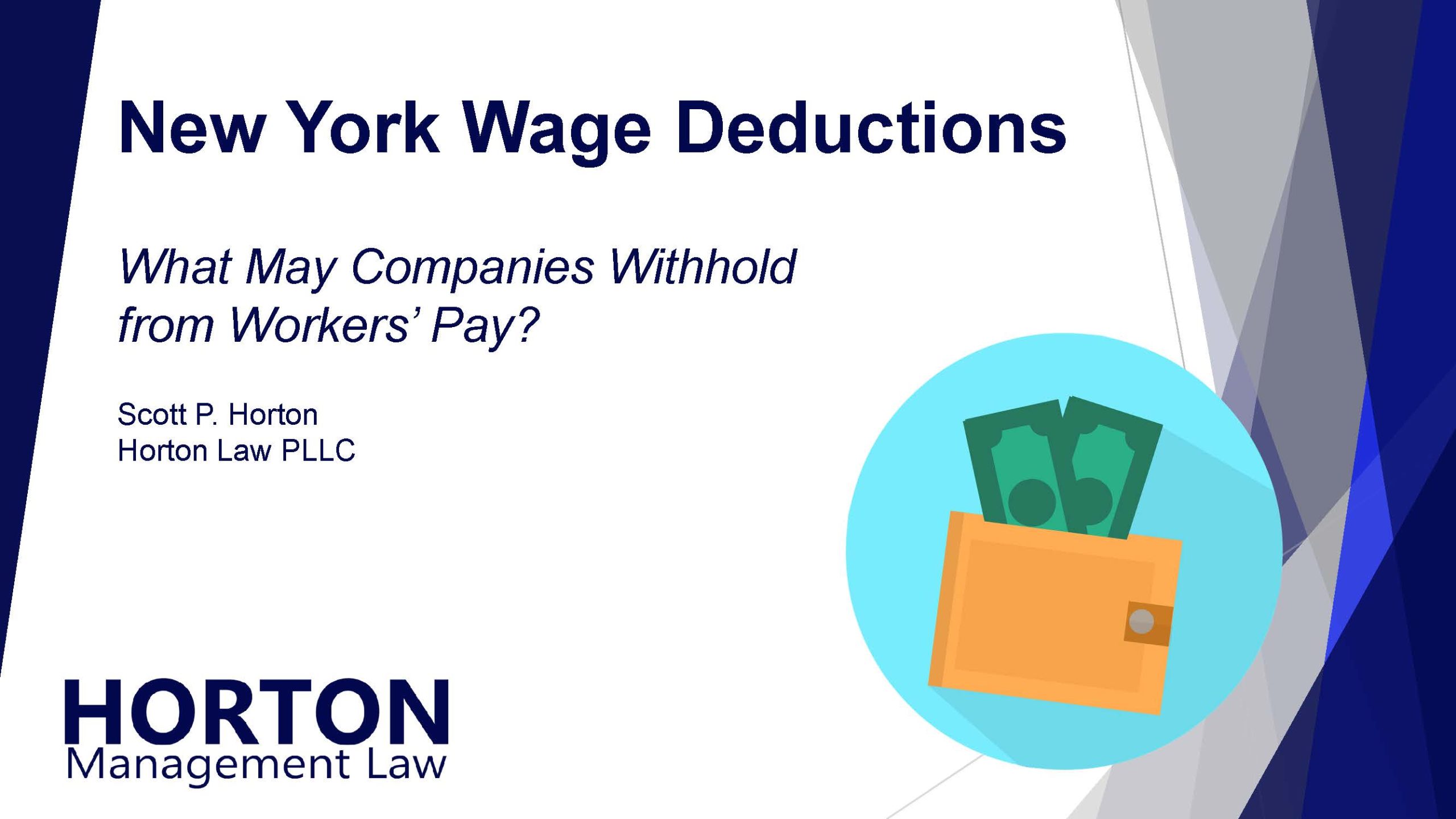New York has restrictive prohibitions against making deductions from employees’ pay. For example, employers cannot deduct money from paychecks to recover the cost of damage caused by employees, cash register shortages, or even theft. However, special rules allow employers to recoup overpaid wages in some situations. But employers must comply with a series of procedural requirements to do so. These rules apply to all non-governmental businesses in New York.
Overpayment of Wages Due to Mathematical or Other Clerical Error
New York law only permits paycheck deductions for overpaid wages that result from “a mathematical or other clerical error by the employer.”
Surprisingly, the extensive New York State Department of Labor rules on deductions for overpayments don’t further explain what “mathematical or other clerical error” means. Many examples are obvious. If payroll misinterpreted handwritten numbers or added or left off a digit, then it’s almost certainly a clerical error. But is it a clerical error if the company included overtime pay for an employee who wasn’t entitled to it?
What’s most likely not covered is any situation where the company knowingly paid an employee one amount and later decided they should have paid less. Employers can’t reduce pay after the fact, such as based on subsequent observations of performance or in light of business losses incurred by the employee.
Interestingly, the law also might not allow for recovery where wages were overpaid due to a mathematical or other clerical error by the employee. Or even outright employee dishonesty or fraud, such as the employee overstating their time worked through the company’s timekeeping system. Of course, the company can still discipline the employee and even ask for the money back or sue them, but they couldn’t lawfully deduct it from any future wages earned.
Rules for Overpaid Wage Recovery
Assuming recovery is allowed because the overpayment was due to a mathematical or other clerical error by the employer, the company must establish and follow specific procedures to make the recovery legal. Failure to satisfy all requirements could render the wage recoupment unlawful. That would subject the employer to civil and potentially even criminal penalties.
Timing, Duration, and Frequency
Employers can only use paycheck deductions to recover overpayments made in the past 8 weeks.
Only one recoupment deduction can be made per pay period. If necessary, the deductions can last for up to 6 years from the original overpayment to recover up to the full amount overpaid.
Method of Recovery
Employers can recover overpayments through wage deduction or by a separate transaction, as long as they satisfy all other requirements.
Periodic Amount of Recovery
If the overpayment was less than or equal to the net wages earned after other permissible deductions in the next wage payment, the employer can recover the entire amount in that next wage payment.
However, if the overpayment exceeds the net wages after other permissible deductions in the next wage payment, then the recovery may not exceed 12.5% of the gross wages earned in that wage payment. And, in this case, the recoupment deduction cannot reduce the employee’s effective hourly wage below the minimum wage.
Notice of Intent
Before making any recovery of overpaid wages, the employer must notify the employee. The notice must contain the total amount overpaid, broken down by pay period. It must also show the total amount of deductions intended and the date and amount of each deduction to recover the overpayment.
The notice must also inform the employee that they can contest the overpayment. This includes providing the deadline for filing a dispute and the relevant procedure for doing so.
If the entire amount will be recovered in the next paycheck, then the employer must notify the employee at least 3 days before the deduction. In all other cases, the employer must issue this notice at least 3 weeks before the deduction can start.
All notices may be in writing or electronic means, such as email. Employers must use “ordinary language readily understood.” Text can be no smaller than 12-point font.
Dispute Procedure
As mentioned in the notice requirement, the employer must establish a procedure for employees to contest a proposed recovery of overpaid wages.
Except where the employer proposes to make the full recovery in the next paycheck, the employee has one week from receipt of the notice of intent to contest any aspect of the recoupment. Then the employer must reply within one week of receiving the employee’s response.
The employer’s reply to the employee’s response must address all issues that the employee raised. If the employer disagrees with any point the employee raised, the employer must explain why it disagrees. The company must allow the opportunity for a meeting with the employee within a week to discuss any remaining disagreements.
Ultimately, the company must give written notice of its final determination. Any deduction to recover overpaid wages may not begin until at least 3 weeks after the final decision.
If the employer can make the recovery entirely in the next pay period, then the timing for this procedure changes. The employee only has 2 days to respond to the company’s notice of intent. Doing so will postpone the deduction during the above process.
Companies that recovery overpaid wages without following these procedural requirements will create a presumption that any challenged deduction was impermissible.
Be Cautious in Recovering Wage Overpayments
Having the option of recovery wage overpayments through payroll deductions is appealing. And this can work out beneficially for employers. However, missing any components of the procedural requirements could get companies in trouble.
New York law does not look favorably on employers who make improper deductions from employee wages. Even a single complaint from one employee could prompt a broad investigation from the state’s Department of Labor. The NYSDOL has jurisdiction over an extensive arrange of wage and hour requirements. Before tempting this fate, employers should ensure they’re proceeding lawfully. Working with an attorney familiar with New York labor and employment laws is the best way to do this.
For more compliance tips and legal updates of interest to New York employers, sign up for our free email newsletter.


